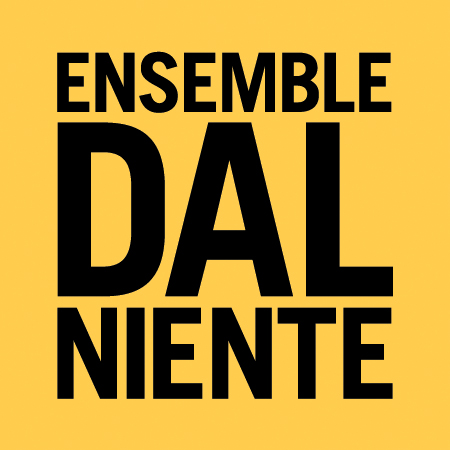“Ensemble dal Niente commissions and selects new music that earns the designation “new” not just because it’s freshly composed; it also challenges both players and audiences to experience performance in new ways.”
These are pieces that Dal Niente performed in the 2020-2021 season, in the midst of a global pandemic. We programmed and performed these streaming concerts, none of which had a live audience, for many reasons: in order to keep making music; in order to explore and deepen our relationships with composers that inspire us; in order to get our musicians paid in a time when it was hard for musicians to do their work; and in order to to do what we feel what art must always do: reflect and interpret the world around us.
Track List
Igor Santos, confined. speak. (2020)
Hilda Paredes, Demente Cuerda (2004)
Tomás Gueglio, Triste y madrigal (2021)
George Lewis, Merce and Baby (2012)
Melissa Vargas, Es casi como el inicio… y comienza (2010)
Andile Khumalo, Beyond Her Mask (2021)
Igor Santos’ confined. speak. addresses themes of confinement and liberation, both sonically and formally: the violin and piano attempt to express themselves through stuttering, interrupted gestures that are constrained in various ways—through the use of mutes on the violin and inside the piano, through confined time in the form of short loops, and through clustered harmonies in a confined pitch space.
Hilda Paredes’ dizzying harp concerto, in which angular melodies are refracted between the harp and ensemble, is titled Demente Cuerda, which can mean either “demented string” (“demente cuerda) or “of sound mind” (“de mente cuerda”)—reflecting, perhaps, states that many of us vacillated between in this difficult year. A welcome sense of discovery underlies the piece, as the harp and ensemble continually renegotiate their respective roles and exchange musical ideas.
Tomás Gueglio’s Triste y madrigal reflects a media fascination with which those of us who lived through 2020 are only too familiar. “An oneiric radio soap opera,” it is at once both quiet and tense, with moments of exuberance bubbling through far-away reflections of recorded 1940s melodrama. The voices from these fragments shape the musical materials around them as they must have shaped the mannerisms and singing styles of the people who consumed them in their time.
In Melissa Vargas’ Es casi como el inicio… y comienza, the composer’s notation liberates the musicians from the tyranny of meter while simultaneously confining them to clock-time. The atmosphere of the piece is free and slow-moving, even while its temporal parameters are carefully circumscribed.
George Lewis brings absent musicians through time with Merce and Baby, exploring an imagined music that exists only as a result of scarce documentation of the 1940s collaboration between celebrated jazz drummer Baby Dodds and avant-garde dance pioneer Merce Cunningham—drum solos and microtonal imitations of John Cage’s Cheap Imitation.
Finally, Andile Khumalo’s Beyond Her Mask brings together the personal and the political, directly confronting violence against women (exacerbated by pandemic living conditions) in his native South Africa. The material for the piece is based on the spectral analysis of two sounds, performed both separately and together: the percussion instrument known as the Lion’s Roar, and a human voice. It’s hard not to identify with the dreamy, fragmentary lullaby at the end of this piece—perhaps we all endured the peculiar alienation, the sense of suspended time, and the underlying anxiety that this music seems to conjure.


